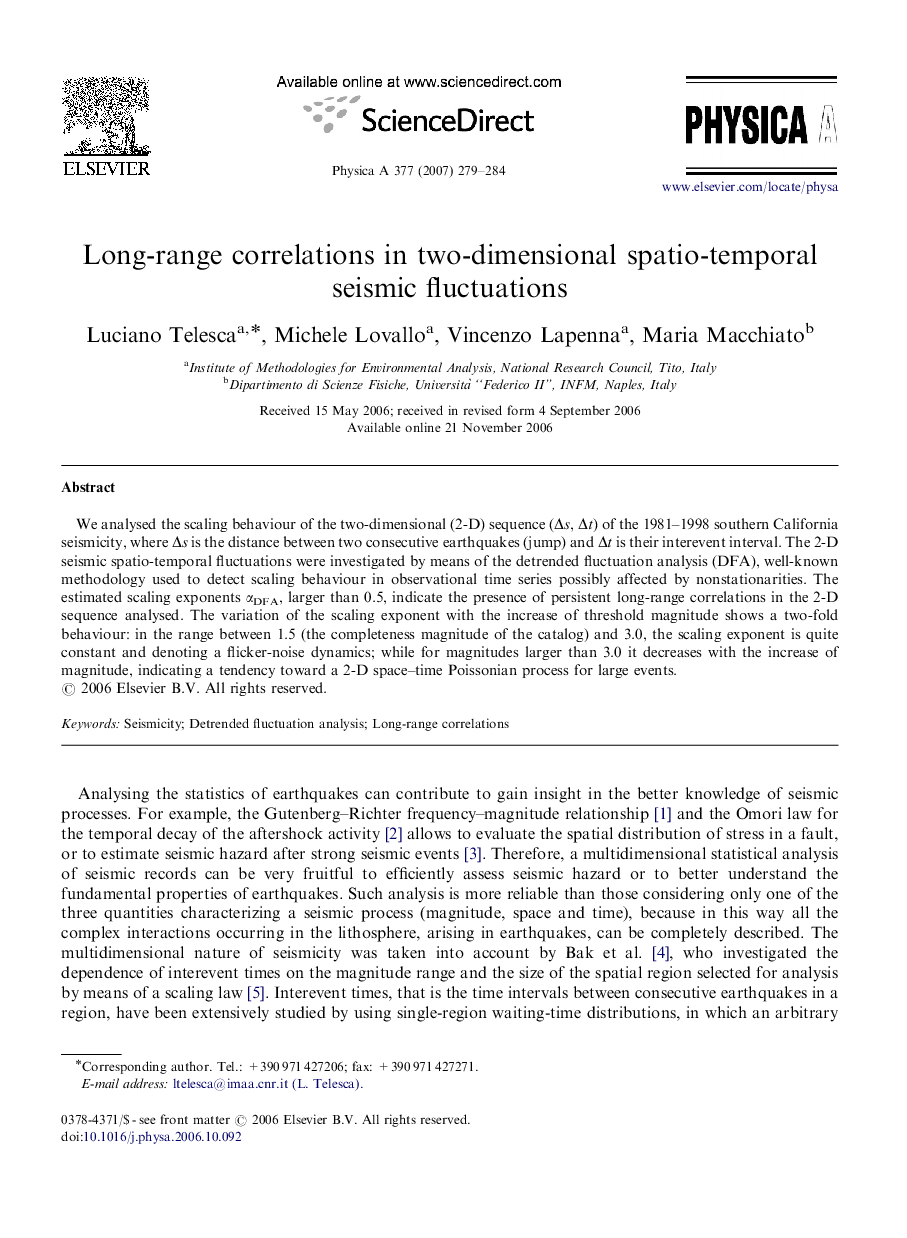| Article ID | Journal | Published Year | Pages | File Type |
|---|---|---|---|---|
| 979641 | Physica A: Statistical Mechanics and its Applications | 2007 | 6 Pages |
We analysed the scaling behaviour of the two-dimensional (2-D) sequence (Δs, Δt) of the 1981–1998 southern California seismicity, where Δs is the distance between two consecutive earthquakes (jump) and Δt is their interevent interval. The 2-D seismic spatio-temporal fluctuations were investigated by means of the detrended fluctuation analysis (DFA), well-known methodology used to detect scaling behaviour in observational time series possibly affected by nonstationarities. The estimated scaling exponents αDFA, larger than 0.5, indicate the presence of persistent long-range correlations in the 2-D sequence analysed. The variation of the scaling exponent with the increase of threshold magnitude shows a two-fold behaviour: in the range between 1.5 (the completeness magnitude of the catalog) and 3.0, the scaling exponent is quite constant and denoting a flicker-noise dynamics; while for magnitudes larger than 3.0 it decreases with the increase of magnitude, indicating a tendency toward a 2-D space–time Poissonian process for large events.
